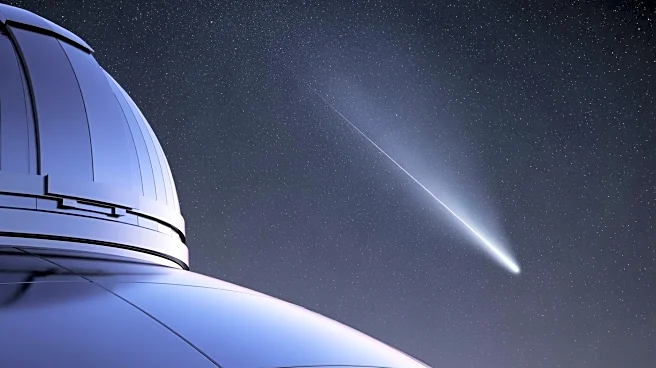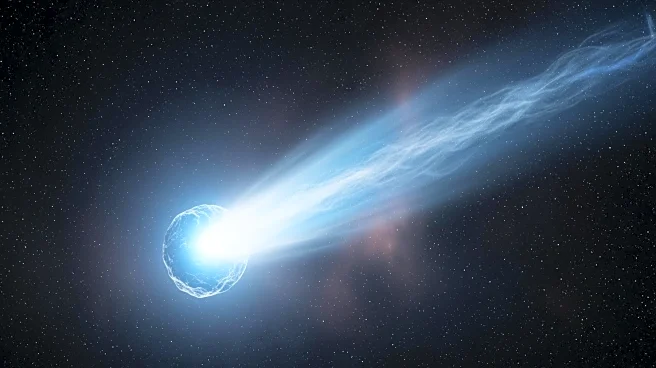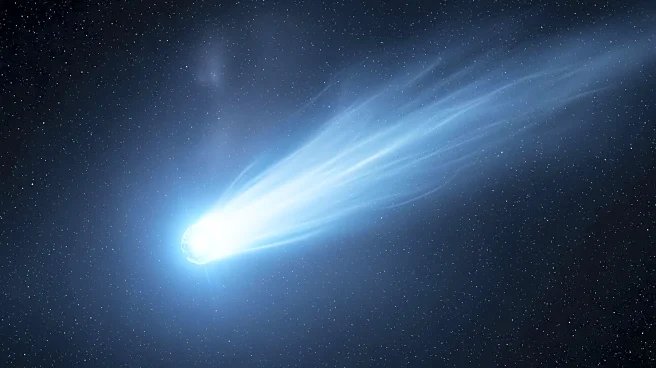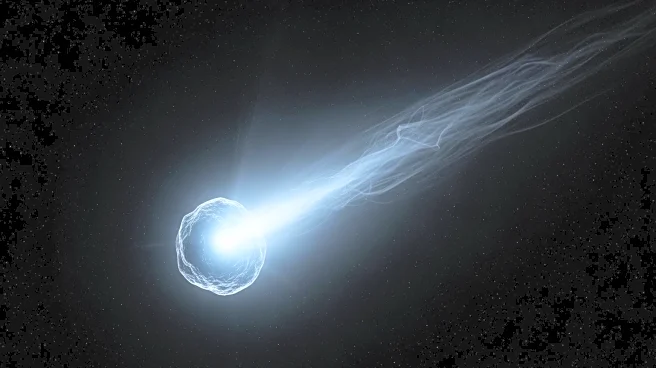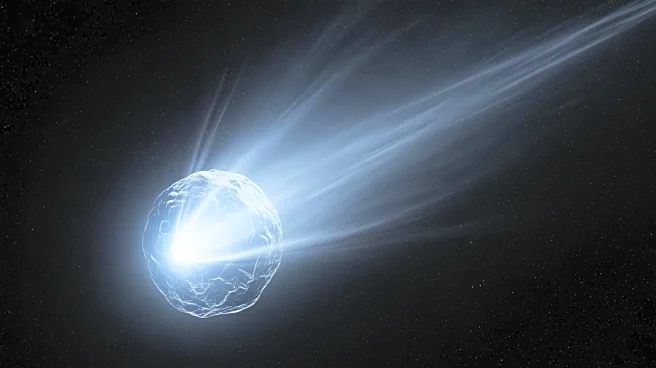What's Happening?
The Asteroid Terrestrial-impact Last Alert System (ATLAS), an automated sky surveillance system, has successfully detected the interstellar comet 3I/ATLAS. Designed primarily to search for dangerous asteroids,
ATLAS has also been instrumental in discovering various astronomical objects, including comets. The system, which began with a telescope in Hawaii, has expanded to include instruments in Chile and South Africa, allowing it to scan the entire sky nightly. Despite challenges such as weather conditions, ATLAS can warn of approaching asteroids weeks before potential collisions, contributing significantly to planetary defense efforts.
Why It's Important?
The detection of the interstellar comet by ATLAS underscores the system's capability to identify celestial objects that could pose threats to Earth. This achievement highlights the importance of continued investment in astronomical surveillance systems for planetary defense. By identifying potentially hazardous asteroids and comets, ATLAS helps mitigate risks to populated areas, providing crucial data for evacuation plans if necessary. The system's success in discovering interstellar objects also contributes to scientific understanding of the solar system and beyond, offering insights into the composition and behavior of these celestial bodies.
What's Next?
ATLAS will continue its mission to track near-Earth objects, with ongoing efforts to improve detection capabilities and expand its network of telescopes. Future advancements may enhance the system's ability to provide earlier warnings of potential asteroid impacts, increasing preparedness and response strategies. Collaboration with international observatories and research institutions will be essential to refine models of asteroid orbits and improve prediction accuracy. The continued discovery of interstellar comets and other astronomical phenomena will likely lead to new scientific inquiries and exploration missions.
